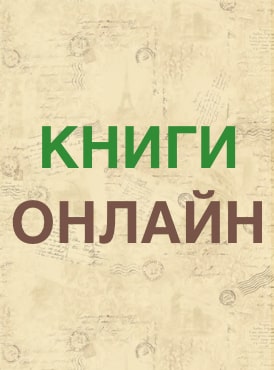В пучине бренного мира. Японское искусство и его коллекционер Сергей Китаев - Евгений Семенович Штейнер
- Дата:13.02.2025
- Категория: Научные и научно-популярные книги / Культурология
- Название: В пучине бренного мира. Японское искусство и его коллекционер Сергей Китаев
- Автор: Евгений Семенович Штейнер
- Просмотров:0
- Комментариев:0
Шрифт:
Интервал:
Закладка:
Your Excellency,
Having spent almost three and a half years in Japan, I collected about two hundred fifty Japanese paintings, several hundred sketches and drawings and several thousand color prints. Among artists, there are representatives of all schools of Japanese painting; thus, the exhibition of their works can give an idea of Japanese art[223].
Striving to enlighten the public, Kitaev organized three exhibitions of his collection: December 1 – 25 (December 13 – January 6), 1896, in the Imperial Academy of Arts (Saint Petersburg); February 1 – 23 (February 13 – March 7), 1897, in the Historical Museum (Moscow); and in late September – October 1905, in the Society for the Promotion of the Arts (Saint Petersburg). Kitaev compiled booklets, or guides, to accompany the exhibitions in 1896 and 1905[224].
E-8
List of Hokusai hanging scrolls from Kitaev’s guide to the exhibition of Japanese painting in St. Petersburg
1905. Private Collection, Moscow.
The first exhibition provoked a flurry of newspaper announcements, reviews and responses. It was preceded by public events and lectures. On November 4 (16), Kitaev showed selected paintings and talked about Japanese art in a high-profile event called Moussard Mondays. The newspaper Syn Otechestva (The Son of the Fatherland) reported: “On the 4th of November, a very lively artistic evening took place in The Salt Town. It is known as Moussard Mondays. Gathered were the chairman, Duke Leuchtenberg, venerated older members such as Professors Lagorio, Karazin, Musin-Pushkin and others. That evening, a Lieutenant Kitaev, who has just returned from Japan, where he brought together a rich collection of Japanese art during his four-year-long stay, showed paintings of Japanese artists and talked about the emergence and development of artistry in that country… The evening was completed by a friendly supper with numerous toasts[225].” The Mussard Mondays, founded in the nineteenth century by Evgeny Mussard, a former secretary to Grand Duchess Maria Nikolaevna, was an aristocratic charitable society made up of collectors, patrons of the arts and benefactors of artists and their families.
Another well-attended event to publicize the upcoming exhibition was a series of three lectures delivered by Kitaev about Japanese life and art with the demonstration of glass slides using a magic lantern. According to the newspaper Novoe Vremya (The New Times), the lectures were attended by a big crowd, including Admiral Pavel P. Tyrtov, former commodore of the Russian Pacific fleet then head of the Naval Ministry; Leonid Maikov, vice-president of the Academy of Sciences; Count Ivan Tolstoy, vice-president of the Academy of Arts; Dmitry V. Grigorovich, director of the Museum of the Society for Promotion of the Arts and other dignitaries[226]. This list of the prominent figures of Russian art, science and the imperial navy who attended a lecture about Japan and its art is rather impressive by itself, but if we recall that the lecturer was a thirty-two-year-old naval lieutenant, it looks more unusual. It is reasonable to conclude that Kitaev was wealthy and well-connected at the highest levels.
The next day, the same newspaper gave more details about the preparation of the exhibition: “Among outstanding works, there will be shown paintings of the Shijо̄, Kishi, Ukiyo-e, Kano and other artistic schools[227].” In a letter written twenty years later, Kitaev would mention the Tosa school – “these artists I used to buy in Kyoto” – and specified that, among the Kano artists, he had several works by Kano Tan’yū (1602–1674)[228].
Five days after the Moussard Mondays event, the local newspaper reminded its readers: “The Japanese exhibition is to be opened on Sunday, the 1st of December, at 10 a.m. It is organized in the Titian and Raphael Halls of the Academy of Arts, and numbers 283 entries. Some of these exhibits include more than one hundred objects (prints, caricatures and colored photographs illustrating Japanese life). All the preparations are finished. The exhibition consists of three parts: paintings, sketches and drawings, and prints[229].” Within a fortnight, a daily gossip column placed the exhibition first in the lineup of what’s on: “Have you seen the Japanese? Listened to the Italians? Watched Duse? Read about the Nelidov audience with the sultan? – These are our hot questions[230].” Instead of closing the exhibition after two weeks, as planned, Kitaev enhanced it with additional works and got permission for its extension until the new year (Gregorian: January 13). The artist Anna Ostroumova-Lebedeva (1871–1955), then a student at the Imperial Academy of Arts and later one of the main proponents of Japonism in Russia, recalls the transformative effect of this exhibition many years later in her memoirs: “Don’t remember exactly, but it could be 1896, there was the first Japanese exhibition organized by Kitaev in the Academy. I was totally smitten… The works were hung on wooden partitions, without glass, in huge numbers, down to the floor”[231].
E-9
The 1905 Exhibition
Kitaev delivers a lecture. Photo: courtesy of Nicholas Roerich Museum, New York.
- Путешествия вокруг света - Василий Головнин - Путешествия и география
- Отказ Громыко, или Почему Сталин не захватил Хоккайдо - Алексей Митрофанов - Политика
- Максим Лыков - Вячеслав Владимирович Головнин - Городская фантастика / Попаданцы / Периодические издания
- Смерть как перемена жизни - Рудольф Штейнер - Эзотерика
- Дворец памяти. 70 задач для развития памяти - Гарет Мур - Менеджмент и кадры





